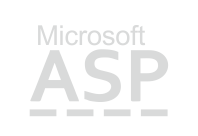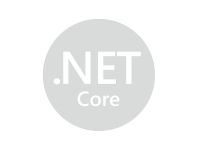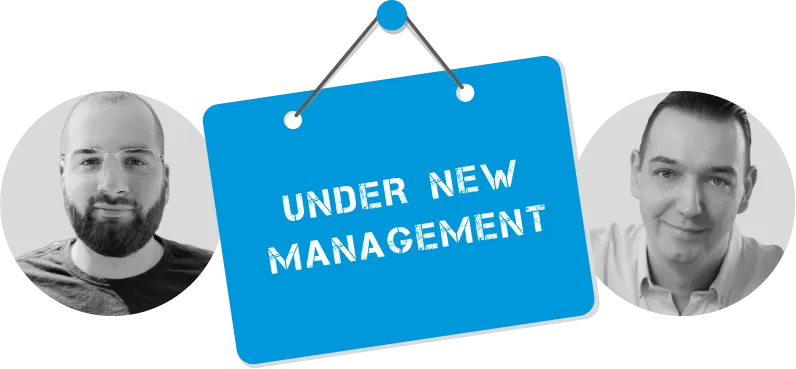Every IT project is a challenge, but some pose unparalleled difficulties. These are the ones we love the most.
In our 25+ years of history, we met several such challenges. As pioneers of Internet technology,
we are best at solving problems no one has ever solved.
-
1996
First webshop with ASP technology
We were the very first to use Active Server Pages to create a
webshop, one of the first webshops in the country. We started
development the same week Microsoft released the Windows NT
Option Pack, including the first version of Active Server Pages or ASP.
At that time PHP was in its early days, and CGI was the standard for programming web apps.
We had two weeks to learn the brand-new technology with very little
documentation and no YouTube videos. It was the dark ages of the
Internet, but we loved it.

-
1999
First online card payment with COM
Intereuropa Bank was the country's first to provide secure online payments API.
We implemented it as a portable COM object that
ran on the Microsoft IIS webserver. Since the Component Object Model
was programming language agnostic, we wrote most of the code in
low-cost Visual Basic and the hardcore secure parts in C++. At that
time, encryption keys were provided offine, on a 3.5-inch floppy
disk.

-
2000
First contract with Agile Scope Management
British American Tobacco’s marketing team needed a web portal critical to their business
model change, and they needed it extremely fast. The deadline was
almost literally deadly; missing it was no option. We won the
tender with our agile scope management methodology and
completed the project on time, on specs and within the negotiated
budget. This approach was so successful that we still use it for agile contracting two
decades later.

-
2001
First live stream
When VIASAT 3 launched the first reality show, our team learned to
integrate a live video stream into the new website we built. At that
time, streaming video was less common than today, five years
before YouTube even started. So we used Windows Media technology
and assembled the hardware ourselves from a minimum budget.
We soldered the last cable one minute before the show launched.
The fun part was that we had backstage access to the studio and the
flat where the players lived.

-
First agile government contract
Budgets and deadlines in the government are critical to project
success. So the IT department of the Prime Minister’s Offce executed
an agile contract with us to deliver an intranet solution with multiple
complex integration scenarios, including a directory of all ministry
employees. It was a challenge to convince their legal team about the
feasibility of an agile contract, but the project’s success
convinced them to repeat it in other projects.

-
2002
Record-breaking online video stream
Big Brother's online stream almost took down the country’s Internet
network. The ISP of the show was unable to service the extreme
bandwidth, so we had 24 hours to fix the situation to serve the
plethora of viewers. We installed multiple servers and connected
them to multiple ISPs and the country’s Internet exchange node. We
used Windows Media 9 technology two weeks before it was announced,
and got direct support from Microsoft headquarters in Redmond.

-
Extreme CMS security & publishing requirements
The National Bank has strict publishing obligations as the country's central bank.
After winning the tender for building and operating a
CMS-based Internet and Intranet portal, we faced
unprecedented demands. Security experts from the bank tried to hack into
our servers for days, without success. They could not log in from the
Internet even knowing the Admin password. Publishing of the
base rate had to be one millisecond on time, so we had to connect the
servers to an atomic clock.

-
2003
Packaged Enterprise Portal software
After reusing our CMS/Portal code for multiple clients, we created
a real packaged software and named it Sense/Net
Portal Engine. Producing a boxed product with installation disk and
documentation is a an entirely different challenge than writing
custom software. Building this product helped us learn a product
mindset, where we treat all software we write as packaged software.

-
Load-balancing massive portal traffic
Building and operating a portal with the second largest traffic in the
country is quite a feat. Especially when most of the content comes from
an editorial system and several integrated IT systems, sometimes
mixed on the same page. Most of the existing systems we needed to integrate into the portal
had not been designed for withstanding high loads, so we had to find a unique load
balancing and caching solution to serve the millions of visitors.

-
2004
Digital Rights Management
DRM is the use of technology to control and manage access to
copyrighted material. An American company outsourced the
development of their DRM software, with which users could take
control of their digital content away from their computers. The
software called Digital Embassy used PKI encryption to control access
to confidential documents sent to clients. These documents could only
be read using our software as long as the author gave permission.

-
Accessible Portal
The city of Budapest decided to make its portal accessible to the
blind and visually challenged. Since content and presentation were
separated using XML technology, we saved much time presenting the same
content in larger type and different color schemes and for screen
readers simultaneously. In addition, we made the portal readable for
the visually challenged and enabled them to edit
and publish content in the CMS.

-
2006
One Hundred Million Documents
We repeated a well-known competitor's benchmark to prove that
Sense/Net ECM is internationally competitive. We loaded
100 million documents into a single Content Repository on a single
server cluster without slowing down the performance,
especially search. We learned a lot about performance tuning and
scalability in this project. If printed, our 100 million test documents
would pile up ten times taller than Mount Everest.

-
2013
First Electronic Money Institute
Modernizing electronic payments has always been a dream for our
founders, so we decided to start a new branch, and Electronic Money
Institution or EMI, to fulfill this dream. Launching a regulated business requires
a great deal of legal work and peculiar technology. We developed our
front-end and back-end systems with Scrum, and built a COBIT 5
compliant infrastructure. In 2015 we spun off Barion as a separate
company that attracted millions of EUR in investment in multiple rounds
since then.

-
2014
Mobile Payment with BLE and iBeacon
We wanted to create a more user-friendly POS payment experience in
the Barion Wallet. Since most phones in 2014 lacked an NFC chip, and
we found reading QR codes cumbersome, we decided to use
Bluetooth Low Energy to facilitate payments. We placed iBeacons,
small BLE devices transmitting an ID next to each cash machine. Barion
Wallets would discover these iBeacons and make the payment. Again, we
learned important lessons from using exotic technologies too early.

-
2015
Hundreds of Millions of Documents in VDR
Transcend, an American Virtual Data Room provider faced numerous
issues with their software, including scaling, stability and security
issues. As a result, they outsourced the development of their new product to us,
relying on our previous experience building highly
secure and immensely scalable web applications. Transcend services
big-name international clients, such as Boeing, Mitsubishi, and AT&T,
managing hundreds of millions of super confidential legal and
financial documents for them.

-
2016
Extreme Permission Management
User management and permission setting are part of every software
project and are a hassle most software engineers shun. However, we love these
challenges and have developed a standalone permission system you
can integrate into your projects. Super-fast permission resolution is
made in memory by a code we’ve been optimizing for years. The
module features allow and deny permissions, and has a place for 16
custom permissions next to the usual see, read and write bunch. Our
CSP platform uses this module as well.

-
2019
Georedundant Private Cloud Infrastructure
To ensure the best quality of service and security, we have built our
private cloud infrastructure in two geographically separate
locations so we comply with financial regulations. In this cloud, we
can provide active-active failover, fintech-level security,
transparent uptime audited by an independent third party, and many
more. Barion and hundreds of clients use our Managed Cloud.

-
Cross-platform support with .NET Core
Migrating our Content Services Platform to .NET Core allows our
customers to run our platform on Linux, macOS, and Windows and in
any public cloud provider that supports the open-source platform.
With .NET Core, we can build independently deployable,
highly scalable & resilient services. Using containers, we can
combine an app plus its configuration and dependencies into a single,
independently deployable unit. Containers are an excellent fit for
bundling and deploying independent microservices.

-
2022
Your project may be the next...
Let’s discuss what challenges you face in your organization. We don’t
employ traditional salespeople; you can discuss your project with
seasoned IT experts, many of whom personally took part in most of
the projects listed above.
































 The website includes cookies
The website includes cookies